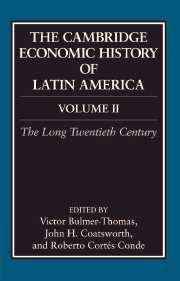Book contents
9 - Economic Growth and Environmental Change
from Part III - Factor Endowments
Published online by Cambridge University Press: 28 March 2008
Summary
INTRODUCTION
Economic activity inevitably alters the natural environment. Lately, there has been a great deal of concern that increased human activity is having effects on the natural environment that may be irreversible, with possibly negative effects on human societies, such as the loss of the ozone layer or global warming. But what is the environment?
Environment is not an easy concept to define. In a fundamental and very general sense, the environment is the surroundings of an object. However, to distinguish between an object and its environment is an abstraction because in nature nothing stands alone and all objects are linked through material and energy flows.
The environment is then an abstraction, a human construct. For most persons, the environment is the physical and biological surroundings: land (lithosphere), water (hydrosphere), air (atmosphere), and wildlife (biosphere) in their different manifestations. There is less agreement as to whether aspects of human societies – such as poverty or income inequality – can also be considered part of the environment of an activity. Increasingly, the tendency is to consider them part of the environment, the so-called social environment. An economic history of the environment is consequently a history of the modifications effected by humans on their physical and biological surroundings and, to a lesser extent, on society.
- Type
- Chapter
- Information
- The Cambridge Economic History of Latin America , pp. 327 - 376Publisher: Cambridge University PressPrint publication year: 2006



